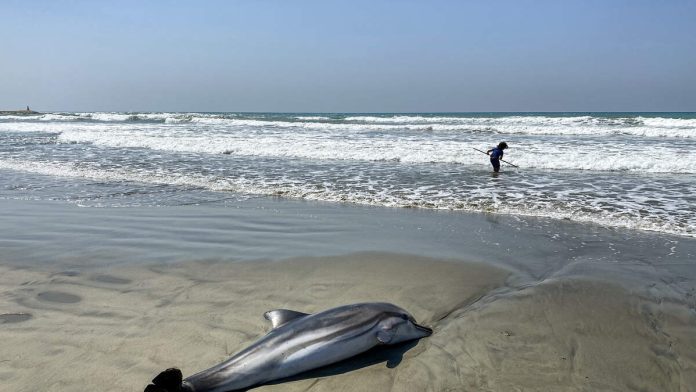A toxic algae bloom along the Southern California coast is causing a significant threat to marine animals, with a particular impact on dolphins. The bloom, stretching from San Diego to San Luis Obispo, is linked to a neurotoxin called domoic acid. This is the fourth consecutive year such an event has occurred, but experts say this year is the worst yet.
According to KABC, the Southern California Coastal Ocean Observing System has mapped high levels of domoic acid, which is causing numerous marine animal deaths. John Warner, CEO of the Marine Mammal Care Center in Los Angeles, noted that the number of dolphin strandings is unprecedented. Over 50 dead and dying dolphins were found along the Los Angeles County coast in just one week, with 16 in San Diego on a single Sunday.
Domoic acid, produced by the algae Pseudo-nitzschia, affects marine mammals that consume contaminated fish. The NOAA Fisheries reports that the outbreak is more severe this year, with over 100 dolphins affected, surpassing previous events. The algae bloom began earlier this year, possibly due to factors like wind-driven upwelling and wildfire runoff.
The NOAA Fisheries’ Southwest Fisheries Science Center has collected more than 50 dolphins from San Diego beaches since March, as reported by NOAA. Most of these dolphins were dead upon arrival or shortly after. The ongoing bloom is not expected to impact dolphin and sea lion populations at a large scale, given their current numbers.
Despite the grim situation, experts remain hopeful that marine populations can recover quickly if provided with adequate resources. However, immediate relief seems unlikely due to the widespread and well-fed nature of the algae bloom. Beachgoers are advised to keep a safe distance from affected animals, as they can behave erratically due to the toxin.

Recent Comments